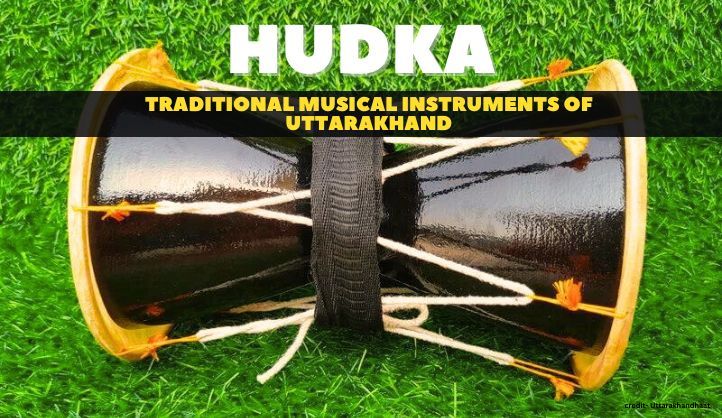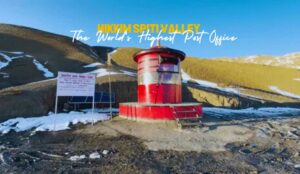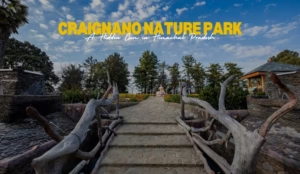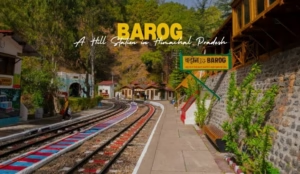Nestled in the majestic Himalayas, Uttarakhand reverberates with a rich cultural tapestry. Music forms an integral part of this vibrant heritage, and at its core lies the unassuming Hudka. This traditional, single-headed drum pulsates with the rhythm of the mountains, accompanying soulful melodies and lively folk dances.
This article delves into the fascinating world of the Hudka, exploring its history, construction, playing techniques, and its significance in the cultural landscape of Uttarakhand.
A Journey Through Time – The Hudka’s History
The exact origins of the Hudka remain shrouded in the mists of time. However, similar instruments like the Damaru are mentioned in ancient Indian scriptures, suggesting a long and illustrious lineage. Folk tales weave the Hudka’s story into the very fabric of Uttarakhand’s past. Legends associate it with deities like Shiva, who is depicted playing a Damaru.
The Hudka’s journey through history reflects the cultural exchanges and influences that shaped Uttarakhand. The Kumaon and Garhwal regions, with their distinct traditions, share a deep connection with the instrument.
Unveiling the Hudka’s Form – A Blend of Simplicity and Skill
The Hudka’s charm lies in its simplicity. Crafted from locally sourced materials, it embodies the spirit of self-sufficiency inherent in the mountain communities.
The body of this musical instrument is traditionally made from wood, often seasoned mango or deodar. Animal skin, typically goat or sheep, is stretched taut over one end, forming the drumhead. The other end remains open, allowing for resonance. A small wooden stick or a loop of cotton cord serves as the beater used to strike the drumhead and produce sound.
While seemingly uncomplicated, crafting a Hudka requires skill and experience. The wood needs to be carefully selected and treated to ensure durability and a rich tonal quality. The thickness and tension of the drumhead significantly impact the sound produced. A skilled craftsman ensures the instrument produces a clear, resonant tone with minimal effort.
Adding a touch of vibrancy, this musical instrument is often adorned with intricate hand-painted designs or simple geometric patterns. These embellishments showcase the artistic spirit of the makers and personalize each instrument.
The Art of Playing the Hudka – Bringing the Rhythm to Life
Playing this musical instrument requires a deft touch and an intuitive understanding of rhythm. The musician, often referred to as a Hudkiya, cradles the instrument in one hand while striking the drumhead with the beater held in the other. Variations in the playing technique create a diverse soundscape.
A strong, direct strike produces a deep, booming sound, while a gentler touch elicits a lighter, more nuanced tone. The Hudkiya can also manipulate the pitch slightly by applying pressure to the drumhead while striking. This subtle control allows for complex rhythmic patterns and dynamic variations within a performance.
This musical instrument thrives not in isolation but in harmonious collaboration with other instruments. In Kumaon, this musical instrument often joins forces with the melodious flute (Bansuri) and the vibrant Dhol (double-headed drum) to create a captivating soundscape. In Garhwal, it complements the soulful notes of the Bina (string instrument) and the rhythmic beats of the Dholki (smaller drum).
The Hudkiya’s skill lies in seamlessly blending the Hudka’s rhythm with the melody of other instruments, creating a unified and captivating musical experience.
The Hudka – A Cultural Tapestry Woven in Sound
This musical instrument transcends its role as a mere instrument, it serves as a vital thread in the rich tapestry of Uttarakhand’s culture.
Religious Significance: The Hudka finds a prominent place in religious ceremonies and rituals. Its rhythmic beats accompany devotional songs and prayers, creating a sacred atmosphere. During festivals like Nanda Devi Raj Jaat and Mahagauri, this musical instrument’s sound resonates through the hills, invoking blessings and celebrating the divine.
Folk Music and Dance: The Hudka is the lifeblood of Uttarakhand’s vibrant folk music scene. From the soulful melodies of Kumaoni ballads to the energetic beats of Garhwali dance music, this musical instrument provides a rhythmic foundation. Folk dances like the Langvir and the Baul come alive with the pulsating energy of the Hudka.
Social Gatherings: Beyond religious and artistic spheres, this musical instrument adds a touch of joy to social gatherings. During weddings and community celebrations, its lively rhythm creates a festive ambiance, fostering a sense of togetherness and shared joy.
Symbol of Identity: This musical instrument serves as a powerful symbol of Uttarakhand’s cultural identity. Its presence at various events reinforces the sense of community and belonging among the people. The sound of the Hudka evokes a sense of nostalgia and a deep connection
The Hudka’s Enduring Legacy and Looking Ahead
Despite its deep-rooted traditions, this instrument, like many other folk instruments, faces challenges in the contemporary world. Modernization and the growing influence of Western music threaten to overshadow the beauty of traditional art forms.
However, there are positive signs of a revival.
-
Government Initiatives: The government of Uttarakhand has taken steps to promote and preserve its cultural heritage. Organizations like the Uttarakhand Sangeet Natak Akademi encourage folk artists and musicians, including Hudkiyas.
-
Cultural Events: Folk music festivals and cultural events provide a platform for musical instrument players to showcase their talent and connect with new audiences. These events not only celebrate tradition but also create opportunities for cultural exchange and appreciation.
-
The Younger Generation: A growing interest among the younger generation in their roots has led to a renewed appreciation for folk music. Music schools and workshops are incorporating this musical instrument instruction into their curriculum, ensuring the knowledge and skills are passed on to future generations.
-
Innovations: Contemporary musicians are experimenting with incorporating this musical instrument into new musical genres. This fusion creates a unique soundscape that bridges the gap between tradition and modernity, attracting new listeners to the instrument.
This musical instrument’s future seems bright. As long as the spirit of Uttarakhand’s rich culture thrives, the Hudka’s rhythmic heartbeat will continue to resonate through the valleys, keeping traditions alive for generations to come.
Conclusion
The Hudka is more than just a musical instrument; it is a vessel of cultural heritage, a symbol of community spirit, and a testament to the artistic ingenuity of the people of Uttarakhand. From its humble origins to its vibrant presence in contemporary music, this musical instrument’s journey reflects the enduring power of tradition. As we move forward, it is crucial to continue supporting and promoting this unique instrument, ensuring its rhythmic legacy continues to enthrall audiences for years to come.
FAQs About Hudka
1. Are there different types of Hudka in Uttarakhand?
While the basic structure remains consistent, there are subtle variations in this musical instrument’s design across the Kumaon and Garhwal regions. The Kumaoni Hudka may be slightly larger and produce a deeper sound compared to its Garhwali counterpart.
2. What other instruments are commonly played with the Hudka?
The Hudka is often played alongside instruments like the Bansuri (flute), Dhol (double-headed drum), Bina (string instrument), and Dholki (smaller drum), creating a rich and layered soundscape.
3. Is the Hudka difficult to learn?
Learning to play the Hudka requires dedication and practice. Mastering the basic techniques and developing rhythmic control takes time and patience. However, with dedication and guidance from experienced Hudkiyas, anyone can learn to appreciate the art of playing this traditional instrument.
4. Where can I hear Hudka music?
Folk music festivals in Uttarakhand and cultural events showcasing traditional music provide opportunities to experience the Hudka’s sound firsthand. Additionally, recordings of folk music featuring the Hudka are available online and in music stores.
5. Can I buy a Hudka?
Traditionally crafted Hudkas can be purchased from local artisans in Uttarakhand. Some online retailers may also offer Hudkas, but it’s important to ensure the instrument is made from high-quality materials and produces a good sound.





